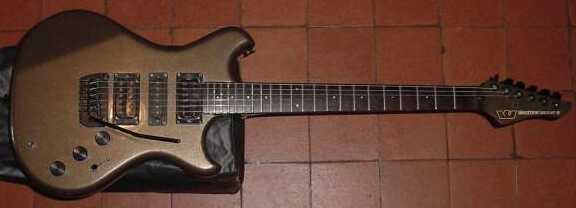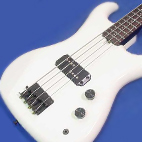
Unlike Steinbergers, no exotic materials were used to construct these instruments. In this case, pickup movement was achieved by mounting it to two steel rails so it could be moved at will. This is similar in concept to the Dan Armstrong basses of the late 1960s. It was designed around the idea of using a pickup that can be re-positioned so many different kinds of tone can be attained. The Rail is one of the more bizarre-looking basses you will ever see, but everything about it is purely functional. In 1984 Westone got on the headless bass bandwagon and over time they introduced a range of instruments, including a full-bodied model (the Super Headless), a small-body model (the Quantum) and The Rail.

Not many of their guitars ere imported to the US, and it seems like most of their products went to the UK. Their products were never a big hit and in 1987 Matsumoku sold the brand to a Korean company, and by 1991 the brand was gone. They built very good instruments, including copies of popular American instruments that caused some legal difficulties.Īfter building instruments for other companies for all of those years, in 1981 they decided to start their own brand and Westone was born. Matsumoku was a Japanese company that specialized in making guitars for many brands, including Aria, Epiphone, Vox and more.

If you have not heard of Westone before, here is a quick run-down on the brand. The 1985 Westone rail bass we are looking at today is one of these, but with a few twists. Back in the 1980s, the Steinberger L-series basses were quite chic, but not cheap, so a few makers got on the bandwagon and produced their own small-bodies headless basses.


 0 kommentar(er)
0 kommentar(er)
